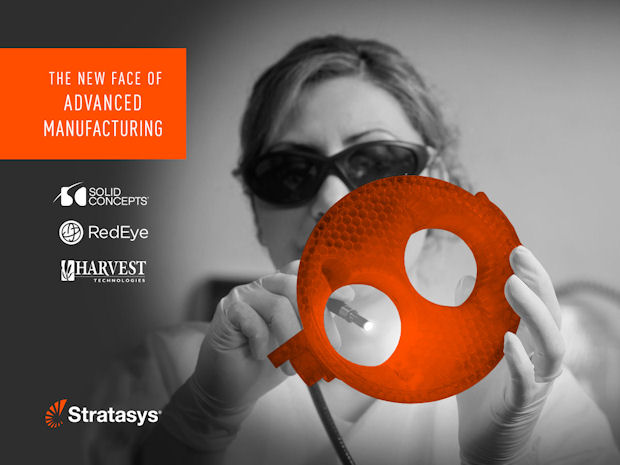How 3D Printing Will Continue to Transform Manufacturing
Latest News
November 18, 2014
 Dear Desktop Engineering Reader:
Dear Desktop Engineering Reader:
Google the old phrase “may you live in interesting times.” Its history is as interesting as its double edge. But, you know, in the North American design and manufacturing milieu, these are interesting times in a good way. It seems that North American manufacturing is on the rebound. And why is that? Today’s Check it Out link takes you to a white paper that studies this question. Simply put, this is an interesting read well timed for our current economy.
“How 3D Printing Will Continue to Transform Manufacturing” has a tight focus on additive manufacturing, eschewing side trips into equally transformational technologies such as robotics. Yet its singular concentration only enhances this 17-page paper’s vast scope. The observations, implications and assertions in its six sections have broad relevance for anyone who thinks long and hard about the future of American design and manufacturing industries.
Those six sections are Today’s Manufacturing Challenges, Additive Manufacturing as a Complement to Traditional Manufacturing, A New Solution for Short Run Production, Design Freedom for Improved Efficiency, New Manufacturing Obstacles and Past Success, Future Vision. Depending upon the section, you’ll find hard-dollar and efficiency metrics, examples from real-world experiences and citations from independent studies. Space does not allow for a synopsis of each section, so here are a few highlights from this paper:
The paper’s quick introduction is excellent. It sets the tone for what’s to come by looking at where and how 3D printing fits into manufacturing today and what it portends for the future. The short of it, and the paper itself, is that 3D printing is coming of age. People now realize that 3D printing is not a replacement for computer numerically controlled machines (CNCs), molding machines, presses and so on. Rather, it’s a complementary technology that can do jobs the others cannot, enhances other manufacturing technologies and serves as an ideal production medium for prototypes, final parts and one-off products.
If some of that brings the now passé buzzword “mass customization” to mind, you would not be wrong. That’s the third section. But that’s just a part of the story. The key is that 3D printing enables innovation in terms of manufacturing for design as opposed to the historic mindset of designing for manufacture. That’s the game changer that plays a vital role in bringing manufacturing back to this country.
Many readers will find the “Additive Manufacturing as a Complement to Traditional Manufacturing” section highly interesting since it debunks the popular notion that new technology must inevitably void the old. Here, the focus is on the integration of 3D printing with traditional machining processes. There’s not a whiff of denigrating machining systems. On the contrary, CNCs, for example, receive kudos for their tight tolerances and the large components they can handle.
Hammered home in this paper is the fact that 3D printing enables products to be machined better and faster. For instance, 3D printing enables quick turnarounds of higher-quality and greater detailed masters for silicone tools and investment casting. Metal 3D printing makes previously impossible internal conformal cooling lines possible for injection molding. You can 3D print jigs and fixtures for more efficient and nimble production lines. You can use 3D printed parts to work out the intricacies of an assembly process. The list goes on and on, but the point is that these are the kind of efficiencies that lead to competitiveness on a global scale.
Now, economists don’t agree on a lot of things, but most agree that new technologies play a key and sustainable role in the recovery of the North American manufacturing industry. 3D printing is one of the technologies most often cited as breathing new life into what had seemed to be American manufacturing’s slow decline. This paper provides any number of insights as to why such optimism abounds.
“How 3D Printing Will Continue to Transform Manufacturing” is an important and serious paper that should be easy for anyone to read whether they have a background in manufacturing or not. It was co-developed by the newly unified companies of the Stratasys advanced manufacturing service bureaus, Solid Concepts, RedEye and Harvest Technologies. It is meticulously non-promotional and utterly thought provoking. It will hold your interest. Hit today’s Check it Out link to download your complimentary copy. Well done.
Thanks, Pal. – Lockwood
Anthony J. Lockwood
Editor at Large, Desktop Engineering
Download “How 3D Printing Will Continue to Transform Manufacturing” here.
Subscribe to our FREE magazine, FREE email newsletters or both!
Latest News
About the Author
Anthony J. Lockwood is Digital Engineering’s founding editor. He is now retired. Contact him via [email protected].
Follow DE






